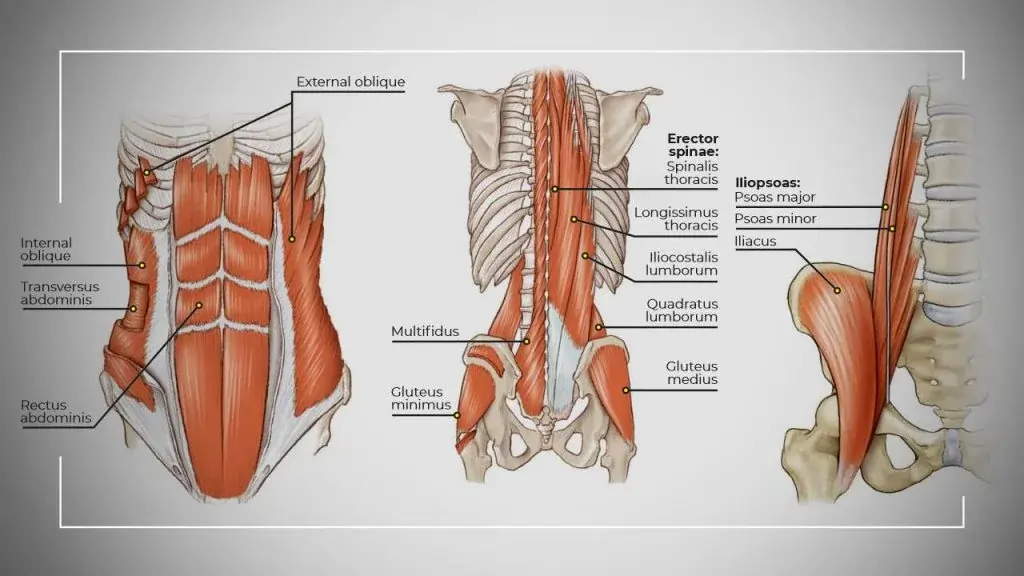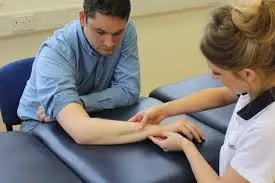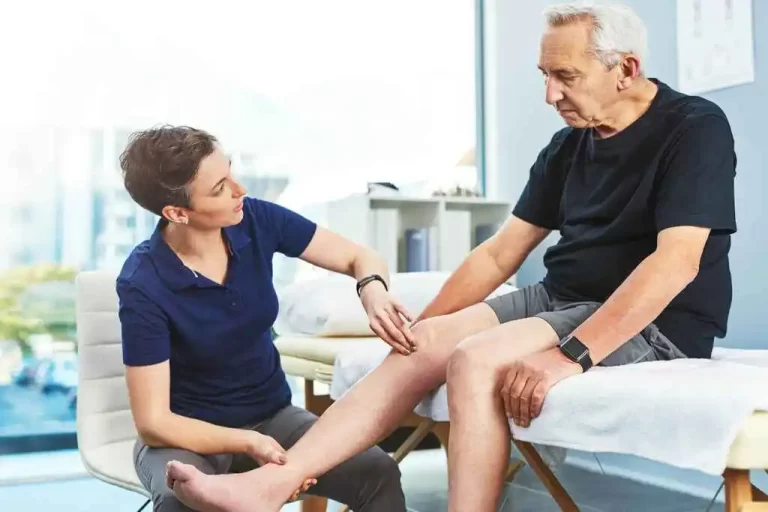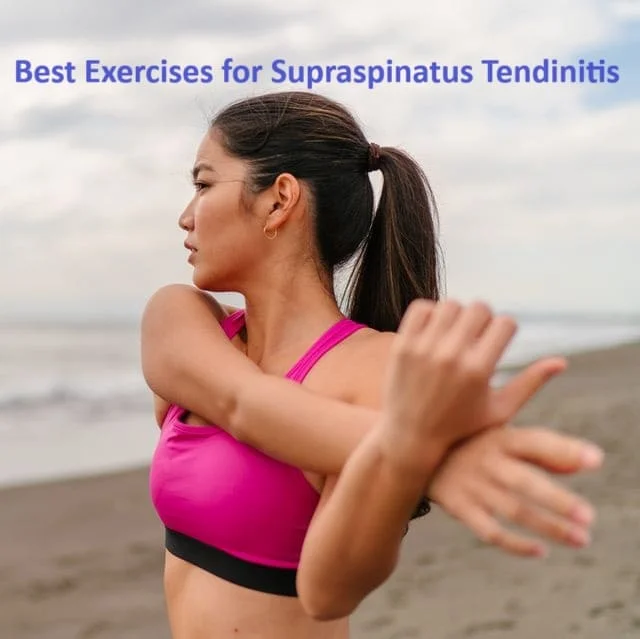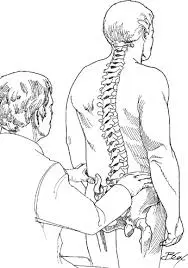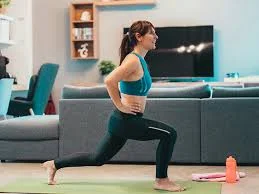Deep Core Muscles
Deep Core Muscles: What Are They?
The deep core muscles are a group of stabilizing muscles that support the spine, pelvis, and abdomen. They include the transversus abdominis, multifidus, diaphragm, and pelvic floor muscles. These muscles work together to provide stability, improve posture, and reduce the risk of injury, especially in movements requiring balance and control. Strengthening the deep core enhances overall functional strength and protects the lower back.
The phrase “the core” describes a collection of muscles rather than just one. The set of muscles responsible for covering the trunk and hip is known as the core. The hip core muscles, abdominal viscera, and spine are all covered by deep core muscles, which are crucial for maintaining good posture. Strength and stability are provided by core muscles.
To regulate the midsection of the body, these deep muscles have the unusual ability to activate before a movement begins.
List of Deep Core Muscles:
- Rectus abdominis – (at the front).
- Internal and external obliques – (on sides).
- The transversus abdominis muscle wraps horizontally over your stomach.
- Erector Spinae – (next to your spine).
- Multifidus – (runs along your spine).
- Quadratus Lumborum – (in your lower back, above your hips).
- The diaphragm is located on the upper part of your core.
The muscles that make up your body’s floor or bottom are called pelvic floor muscles.
These deep core muscles cooperate to provide your abdominal power and stability. The deep core includes the diaphragm, pelvic floor, transverse abdominis, and multifidus muscle. Your entire body is supported by the combined action of these core muscles. Dysfunction can also occur if someone is hyperactive or engaged in the wrong way.
The Fundamental Units:
An inner unit and an exterior unit make up the core units. Together, these parts enable us to carry out basic daily chores and deliver more sophisticated performance.
The Internal Unit:
- The “inner core” is another name for the deeper muscle group.
- Some people refer to it as “the anticipatory core.”
- The deep core is the name given to the inner core unit.
- The deep core muscles serve as a safety belt for the spine.
- The spine is supported and stabilized by these intrinsic core stabilizers.
- These muscles stabilize the pelvis in conjunction with the hip flexors and glutes.
The following muscles are part of the deep core:
Stability of the Deep Inner Core: The transversus abdominis (TA), multifidus (MF), pelvic floor (PF), and diaphragm are among the muscles of the lower spine.
The deepest muscle in the abdomen is this one.
These muscles protect your spine by acting as a belt around your waist.
Another name for it is a “corset muscle,” which surrounds the pelvis and spine. To safeguard the spinal joints, ligaments, discs, and nerves in the typical scenario, TA contracts in advance of body movements.
Particularly significant is the transverse abdominis, which runs from your lower ribs to the top of your pelvis. Its horizontal fibers encircle your abdomen like an inbuilt back brace.
Multifidus:
It is yet another important pelvic-connected muscle stabilizer.
These muscles are extremely short and extend from one vertebra’s transverse processes (on the sides) to the next vertebra’s spinous process.
Their main purpose is to stabilize the back.
They make an attempt to always give little, “fine-tuning” postural adjustments rather than developing a significant range of motion.
Pelvic Floor & Diaphragm:
It gives the pelvis support and stability.
Together with your diaphragm and pelvic floor, the transverse abdominis and multifidus create a solid yet flexible region surrounding your lumbar spine.
It enables you to conquer back problems and lower your risk of recurrence by stabilizing your lumbar spine in a variety of situations.
The functions of the Core muscles:
- For proper load.
- The kinetic chain, pelvis, and spine should all be balanced.
- It protects the spine from an excessive amount of strain.
- It is also crucial for the load transfer -between the upper and lower bodies.
- If we have a strong, steady core it assists us to prevent injuries.
- To offer the requisite spinal stability
The paraspinal, gluteal, hip girdle, abdominal, and other muscles are the ones that function in groups. Additionally, there is a lower quadrant core (hip and trunk) and an upper quadrant core (glenohumeral and scapulothoracic joints). These are the muscles of the core trunk: The muscles of the abdomen, lumbar region, lateral region, and thoracolumbar region. The hip flexors, extensors, abductors, adductors, and rotators are the main hip muscles.
The diaphragm serves as the ceiling of the muscular box that is the core, with the pelvic floor and hip girdle musculature at the bottom, the abdominals at the front, and the paraspinal and gluteal muscles at the rear. The box contains 29 pairs of muscles that work together to stabilize the kinetic chain, the pelvis, and the spine during functional motions. With compressive stresses that are less than the weight of the upper body, the spine will become mechanically unreliable if these muscles are absent.
Global Movers and Stabilisers of Core Muscles:
Stabilizers and global movers are the two categories of core muscles.
For the best spinal stabilization, all of the global movers and stabilizers must contract in unison.
The stabilizer muscles include :
- Pelvic floor
- Transversus abdominis
- Internal Obliques
- Multifidus
- Diaphragm
The global movers/muscles include :
- Rectus abdominis
- External obliques
- Erector spinae
- Quadratus lumborum
- Hip muscle groups
Muscle Types:
Slow-twitch and fast-twitch muscle fibers, as well as stabilizers, make up the core muscles. These muscles have a significant postural component and are slow-twitch, while the global movers are fast-twitch.
Slow-twitch fibers: Mostly make up the deep muscular layer or local stabilizing muscle system. These muscles are shorter and better at regulating intersegmental motion, which is essential for postural and extrinsic loading responses.
Fibers with fast twitch:
It is composed of the superficial muscular layer, which is a worldwide muscle system. Because of their length and massive lever arm, they generate a lot of torque and gross motions.
The myofascial girdle:
Thoracolumbar Fascia: The erector spinae aponeurosis (ESA) and the thoracolumbar fascia (TLF) are crucial components of the spine’s biomechanics. The core passes via the Erector Spinae Aponeurosis (ESA), an evaluative component of the myofascial girdle covering the lower section of the torso, and the thoracolumbar fascia (TLF). TLF and ESA also function as proprioceptors, giving signals on trunk positioning as the muscles contract.
Aponeurosis of the erector spinae (ESA):
With a proximal attachment on the sacrum and the spinous processes of the lumbar vertebrae, it is a common aponeurosis that merges with the thoracolumbar fascia and covers the inferior part of the erector spinal muscles.
TLF:
This structural component encircles the core muscles and is composed of aponeurotic and fascial planes. It serves as a hoop around the trunks and stabilizes the lumbosacral spine.
Deep Core Muscle Exercise:
Exercise for Core Strengthening:
Lying on your back with your legs bent is one of the best ways to improve your core. Next, align your fingers with the anterior superior iliac spine’s (ASIS) midline. Now do a Kegel contraction as you exhale. Then, squeeze your pelvic floor muscles to experience a Kegel contraction. For five seconds, maintain the posture. Then unwind.
Reverse star jump:
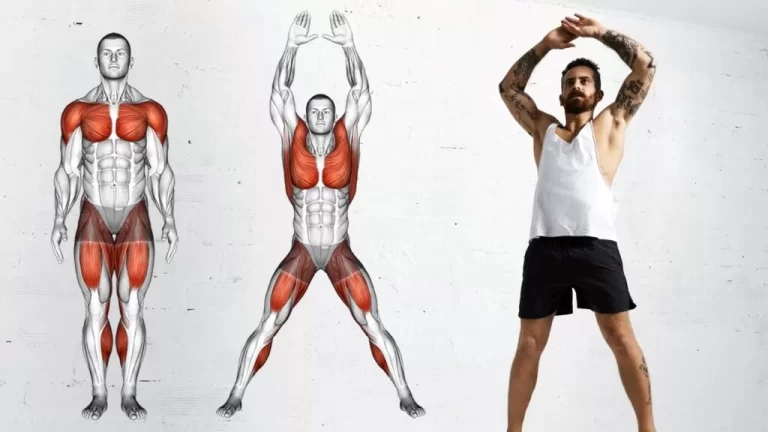
Motivation: Plyometric exercises strengthen your inner core muscles and get them ready for running.
How to execute: Place your arms over your head and your feet wide apart. Feel your tummy lift as you inhale.
Then, when you raise your pelvic floor, release your breath.
Keep letting out breaths.
Then lower your arms and leap to your feet simultaneously.
Then exit again.
Do this ten times.
Advance to the full-speed leaps.
Ski jumping:
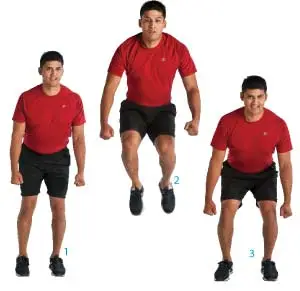
Justification for performing: Assists in determining the neutral alignment when bending.
How to execute: Stand in a neutral position or posture first.
Now move your weight to your forefoot and bend forward from your ankles.
Avoid pushing it in your butt.
Inhale and exhale now.
Do this several times.
Continue doing this until you feel comfortable breathing in this posture.
Squat down and pull down.
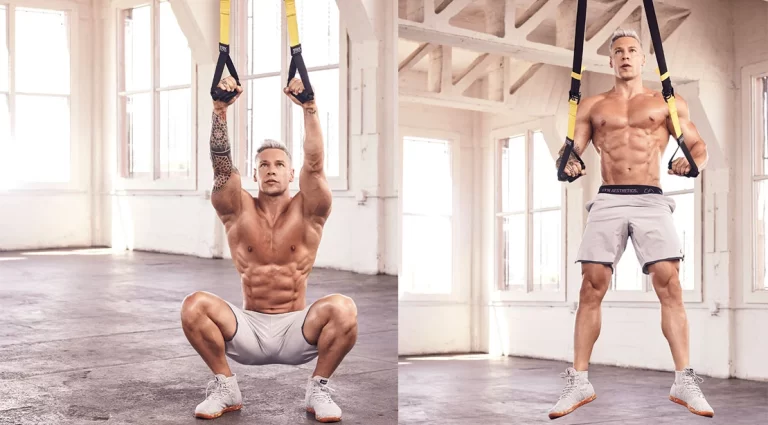
Motivation: To strengthen your back and glutes. Additionally, it draws steadiness from your inner core.
How to execute: Put a resistance band on top first.
Hold both handles now.
And when your arms are straight, take a step back.
After that, take a breath and squat.
Lift your pelvic floor after exhaling.
And when you pull the grips to your hips and stand back up, continue to exhale.
Now take a breath and squat once again, bringing your arms back to the beginning position.
Do this five or ten times.
Weight shift :
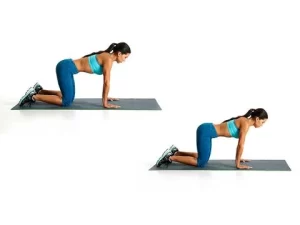
Perform because it awakens your deepest core.
How to execute:
Kneeling on your hands.
Take a breath first.
Feel your pelvic floor relax and your belly grow.
As you raise your pelvic floor, release the breath.
As you continue to exhale, your shoulders will move from your shoulders to your wrists.
You’ve gone too far if you overestimate the bend in your lower back.
Reset this by taking a deep breath.
Do this ten times.
Goblet Squats
Motive for performing: Weightlifting has several advantages, including changing body composition, lowering the risk of osteoporosis, increasing bone density, and lowering the risk of type 2 diabetes. It is an excellent method for strengthening and engaging your deep core muscles. Furthermore, it also works with free weight.
TVA and multifidus, two of the deepest layers of the back muscles, are examples of deep core muscles. So pick up a kid, some dumbbells, or some soup cans and begin lifting. Just keep in mind to always start small and work your way up, and to try to keep your back straight and your eyes forward.
The goblet squat technique:
Hold the weight close to your chest with both hands while standing with your feet hip-distance apart and your toes slightly pointed out.
To develop your core muscles, pull your belly button inside towards your spine.
To get into a deep squat position, thrust your hips back and bend your knees while maintaining an engaged core.
Advice: Throughout, try to maintain a straight back and a forward-facing chest.
Maintain this posture, then straighten your legs and stand again by squeezing your glutes.
How to use marches in a bridge:
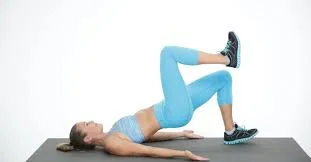
Keep your legs and hips apart and begin by lying on your back with your knees bent.
After exhaling, raise your hips into a bridge posture. From this posture, raise one leg while maintaining hip level to a table at the top. With a different leg, do the same.
Advice: Make sure that during the exercise, your core is engaged and drawn in towards your spine.
Imagine you are balancing a glass of water on your pubic bone, and trying to maintain your hip bone level.
Note: The TVA and multifidus muscles are strengthened by this workout. When combined, they aid in stabilizing the vertebrae.
Bird dog :
How to perform bird dogs:
Beginning with, place your knees under your hips and your hands behind your shoulders.
At this point, place your legs and hips apart and look between your hands.
Exhale now, and while you stretch one leg back and the other arm forward, use your core to pull your belly button in towards your spine.
Advice: As you extend, keep it at hip level and refrain from turning it. Your core remains engaged throughout.
Return your arm and leg to the beginning position now.
Repeat with the opposite arm and leg.
Bird Dog Elbow to Knee:
Knee-to-elbow contact.
Go to your knees.
Take a deep breath.
Maintain a straight back.
Lift one leg behind you.
Now make a straight line by bending forward with the other hand.
To stay stable, keep your core active.
Start moving your elbow in the direction of your knee. Don’t round your back. Just bring them near to one another.
They don’t need to make contact.
Return to the beginning position.
Change sides.
Side Planks:
The side plank technique:
Start by straightening your legs and placing them on top of one another while lying on your side. Then, raise yourself onto the bottom of your elbow.
With your hand and forearm lying on the floor, place your elbow just beneath your shoulder.
Advice: Make an effort to maintain a linear posture for your feet, hips, and shoulders.
Your belly button should be pulled in towards your spine. To raise your hips off the floor, press your glutes while maintaining an engaged core.
Return your hips to the floor carefully now.
Try placing your top foot on the floor in front of your bottom foot, contacting heel to toe, if putting your feet together is too tough.
Note: This is a full-body workout that works with your shoulder stabilizers, glute muscles, back, and core.
Consider changing the workout to involve bending your knees and lifting from your elbow and knee if it causes pain.
Plank Shoulder Taps:
Focus on keeping a firm plank position without lowering your hips or raising your glutes.
Tap your shoulders as many times as you can without losing form.
Related: Steer clear of the plank errors.
Plank Knee Taps:
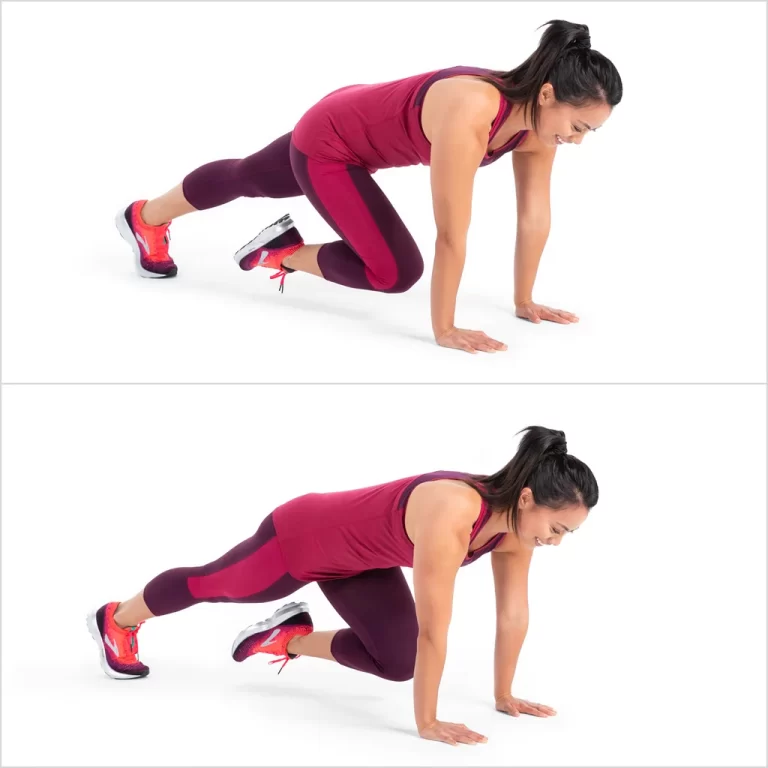
Put yourself in a plank posture first.
Maintain an active core.
To tap the mat, start by dropping your knees, then swiftly raise them back up.
Try to complete as many repetitions as you can without compromising your form.
Deadbug:
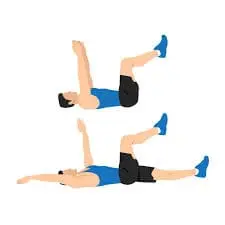
How to deal with dead bugs:
Start by laying flat on your back with your knees bent, feet flat on the floor, and arms at your sides.
To engage your core, draw your belly button in the direction of your spine.
Lift one leg at a time into a tabletop posture while maintaining an engaged core.
As if you were attempting to touch the ceiling, raise your arms straight up in the air.
Advice: To avoid letting your legs touch the floor, try to move it gently and focus.
Rollouts with stability ball:
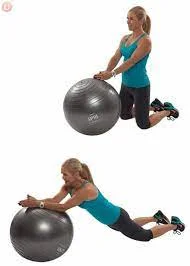
How rollouts are carried out:
Place both of your knees just beneath your hips.
Now put your hands together and lay on top of a stability ball that is right in front of you.
To activate your core and maintain it throughout the exercise, draw your belly button in towards your spine.
Start rolling the ball away from you with your arms.
You will first press your forearms into the ball as it rolls, then your elbows.
As your body descends towards the floor, maintain alignment between your knees, hips, and shoulders.
One piece of advice is to avoid holding your breath and to keep your shoulders back and down.
Stop the ball from rolling farther when you have successfully lowered your torso into a modified plank posture.
As you return to a kneeling posture, strive to maintain a straight back while using your arms to draw the ball back towards you.
Note: Throughout this exercise, keep your hips, shoulders, and knees in alignment. Don’t thrust your hips up in the air, shrug your shoulders up towards your ears, or allow your hips to drop to the floor as you roll from one position to another.
Plank Knee To Elbow:
Put yourself in the plank posture first.
Use your core.
Now, without curving your back too much, bring one knee near your elbow.
After that, flip sides and return your leg to its initial position.
Hip Dip:
It essentially works the entire core, which includes the muscles of the rectus abdominis, transverse abdominis, and obliques. It is the best because it is simple to advance through and teaches you how to generate tension throughout your body. It also has a high assignment transfer to other exercises, like as push-ups and pull-ups, so you may learn how to work your abs more effectively in any activity you do.
How to accomplish it:
The first step is to lie face up with your arms straight over your head and your legs outstretched, keeping them near to your ears.
Now push your lower back into the floor by contracting your abs.
Lift your legs off the floor by pointing your toes and squeezing your glutes and thighs together.
Keep your head in a neutral position and lift your shoulders off the floor to prevent overstressing your neck.
You should now be in the shape of a banana with only your hips and lower back on the ground while keeping your legs and center back off the ground.
This is where you will begin.
Maintaining a strong grip, slowly bend forward and backward until your hands and feet almost touch the ground.
Put yourself in the starting position and just hold if this is too hard to do.
Raise Your Legs:
In addition to targeting your lower abdomen, this exercise is a great way to extend and develop your hip flexors, which are crucial for core strength and stability. In addition to strengthening your abs, it will assist you increase your hip mobility, which will benefit all aspects of your fitness. It is quite normal for people to have tight hip flexors, particularly if they have a desk job all day. Adding these can help you become more flexible in that region.
How to accomplish it:
With your hands at your sides or tucked under your hips for additional support, lie down with your legs outstretched.
Now, steadily lift your legs as straight as you can while maintaining their unity until your shoe bottoms face the ceiling.
After that, carefully drop your legs. Keep your feet dangling a few inches above the ground rather than touching it.
One rep, that is.
Keep your lower back flat on the floor while performing this exercise. Don’t drop your legs as much if you’re having trouble accomplishing that.
In addition to providing you with support and protection, activating and strengthening these deep core muscles will provide you with instant comfort.
Advantages of Physical Therapy for Strengthening the Core:
- Boost stability.
- Boost your endurance.
- Become more physically fit.
- Alleviate discomfort.
FAQs
What is the deepest muscle in the core?
The deepest muscle in the core is the transverse abdominis. It is the layer of muscle that is deepest. It is crucial for maintaining internal abdominal pressure and stabilizing the trunk.
Which four deep core muscles are they?
The diaphragm, pelvic floor, transverse abdominis, and multifidus are the four deep core muscles. These four deep core muscles cooperate to sustain the entire body. A malfunction may arise if one of them is improperly, excessively, or inactively engaged.
How do I acquire a six-pack that is deeper?
The upper abs can be effectively activated by performing crunches with the knees raised. To guarantee a strong contractile activation of the lower abs, you may also incorporate reverse crunches, which involve curling up from the pelvis. Crunches that twist can also be used to guarantee that the obliques are properly activated.
What advantages can deep core workouts offer?
Exercises for your deep core enhance your physical fitness and help you become more balanced, stable, and resilient.
Which pack abs are the highest?
The largest and highest-pack abs are a 12-pack. It may surprise you to learn that there have been cases of autopsy involving individuals with 12-pack abs. If you consider the general percentage of people who have another form of abs, the likelihood of getting a 12-pack is rather low.
References
- Department of Health & Human Services. (n.d.-a). Abdominal muscles. Better Health Channel. https://www.betterhealth.vic.gov.au/health/conditionsandtreatments/abdominal-muscles
- Dr.AnkitaChavda. (2023, December 13). Deep Core Muscles – list, ANatomy, Function, Exercise – mobile. Mobile Physiotherapy Clinic. https://mobilephysiotherapyclinic.in/deep-core-muscles/

